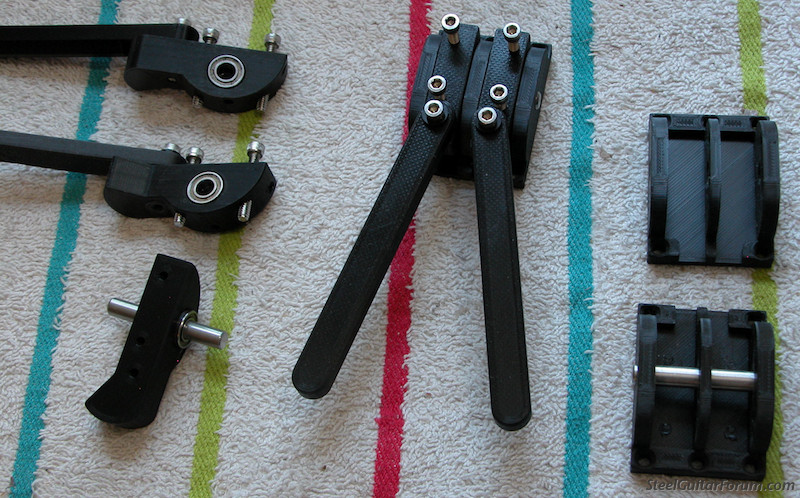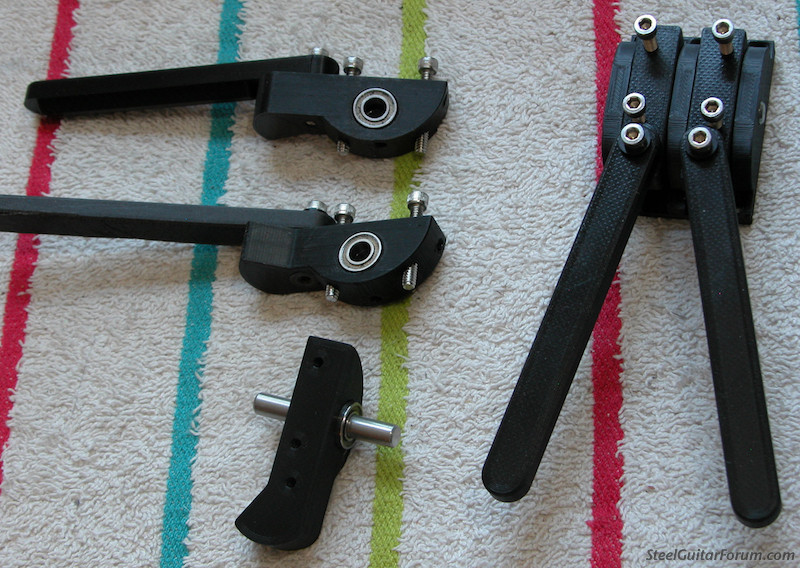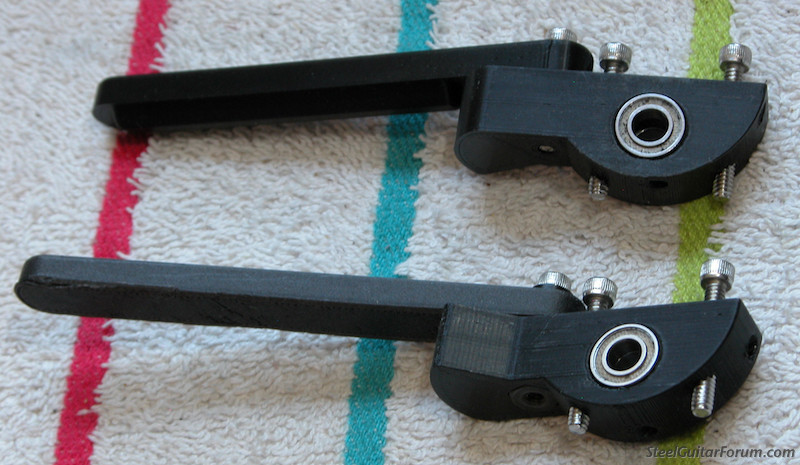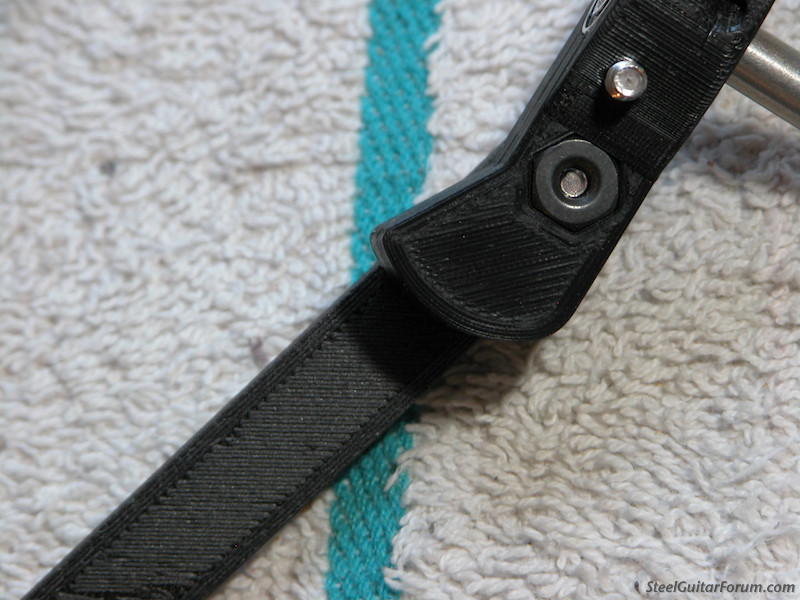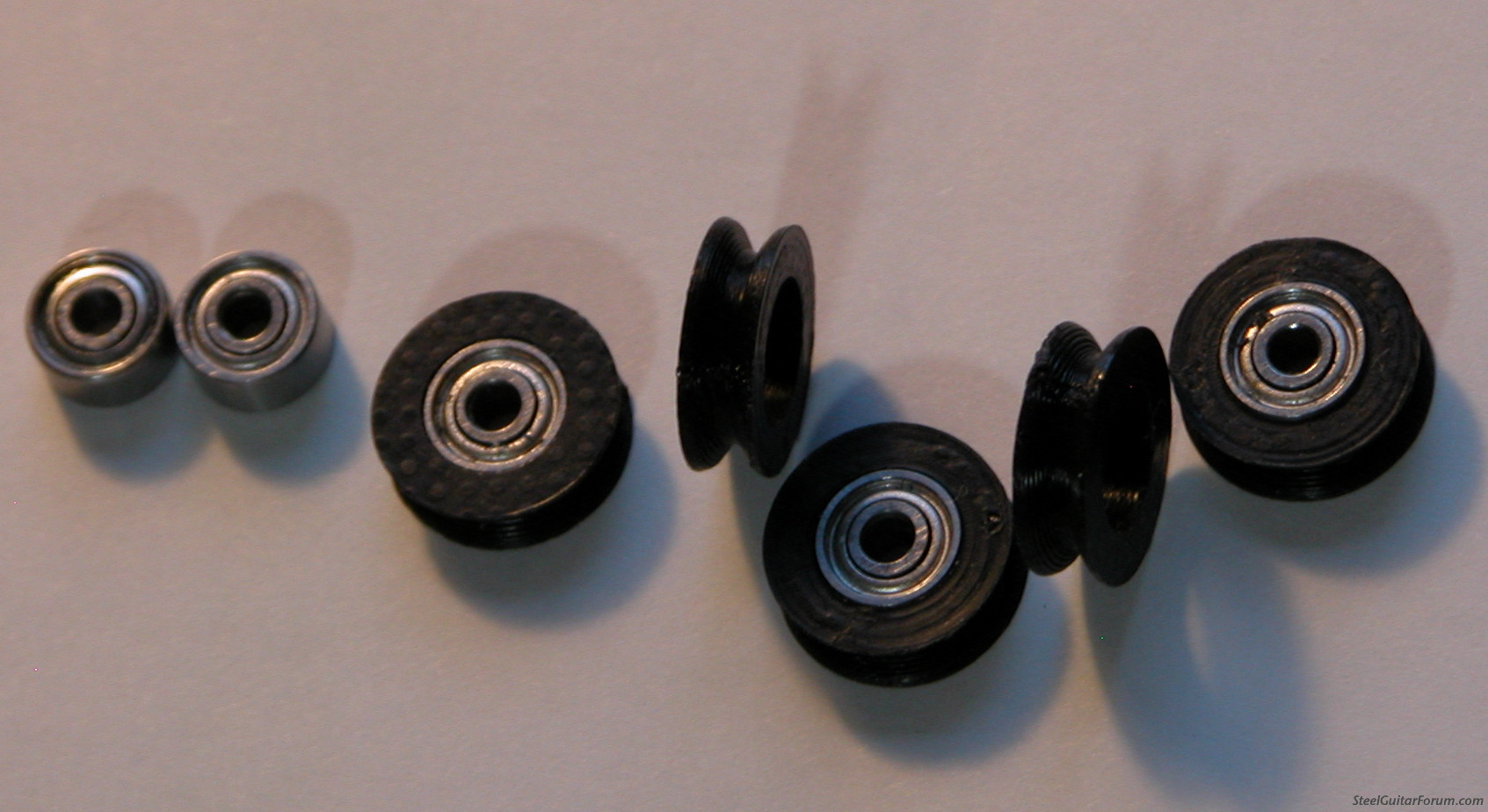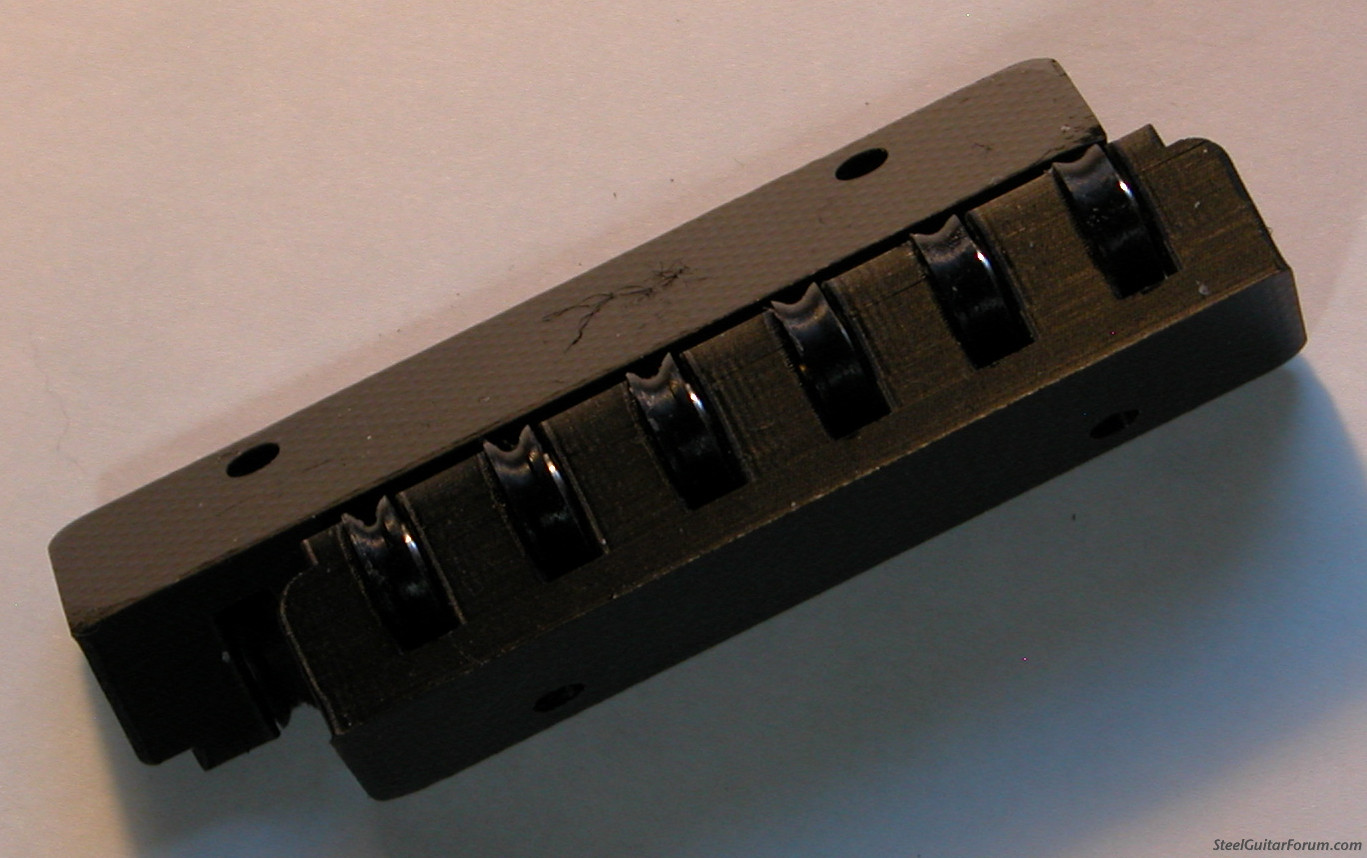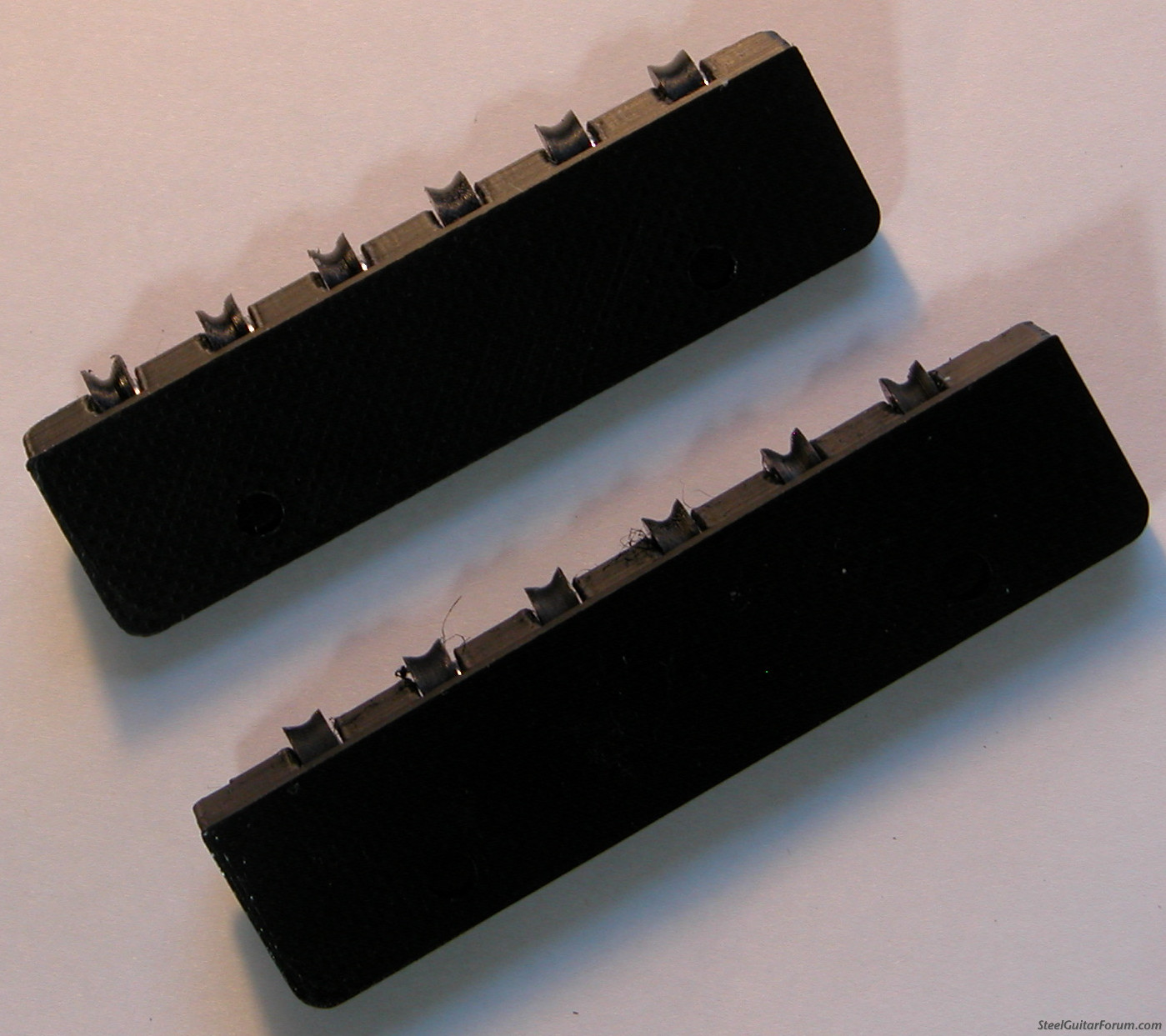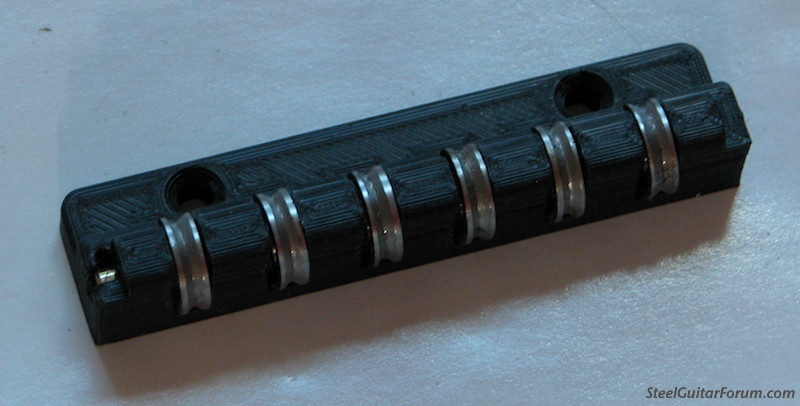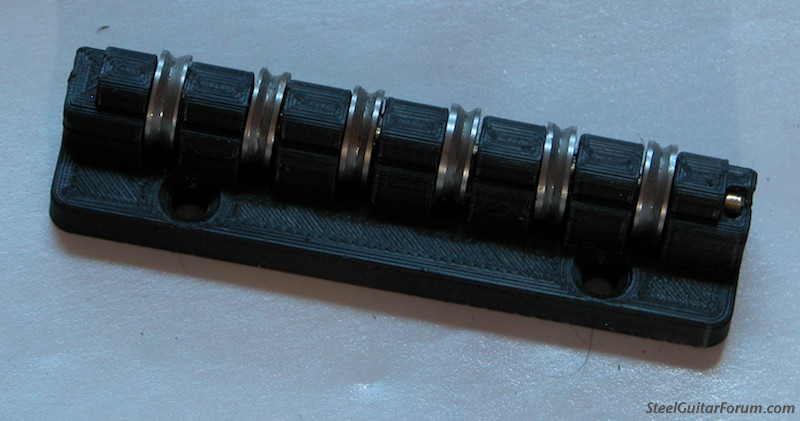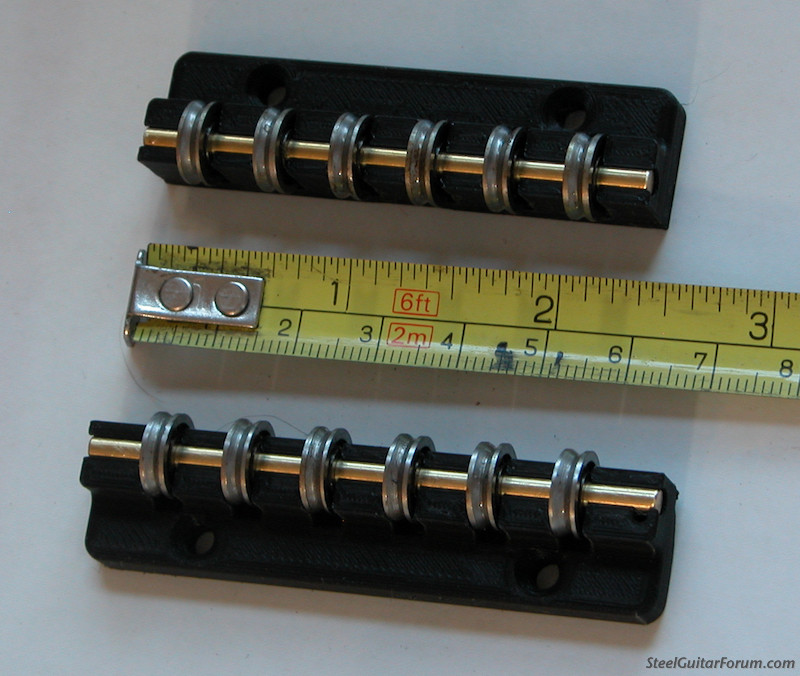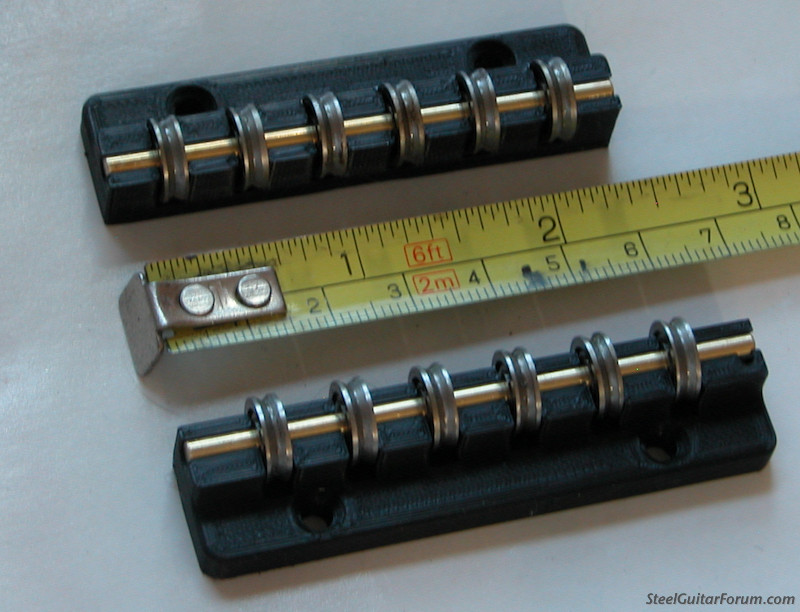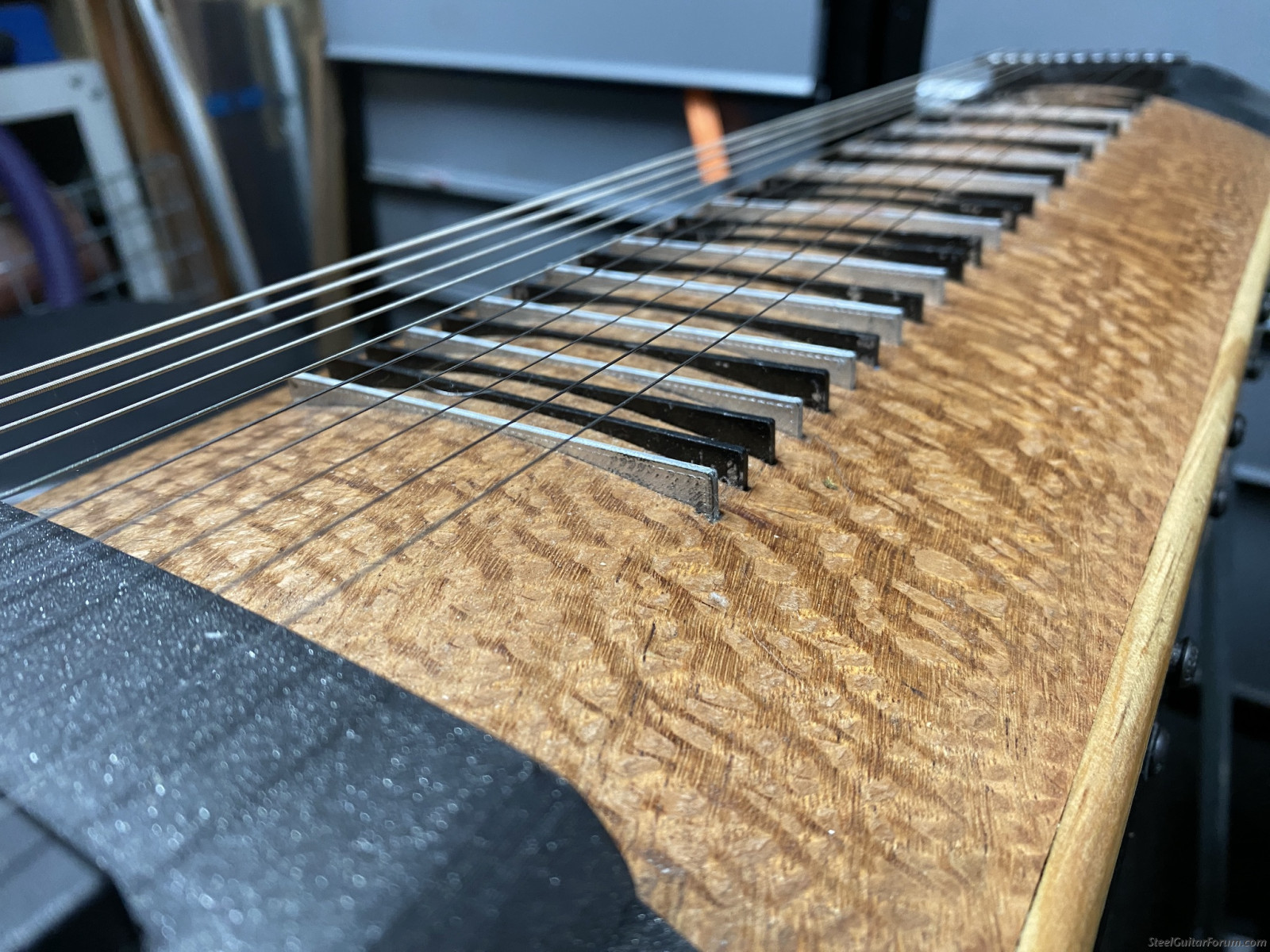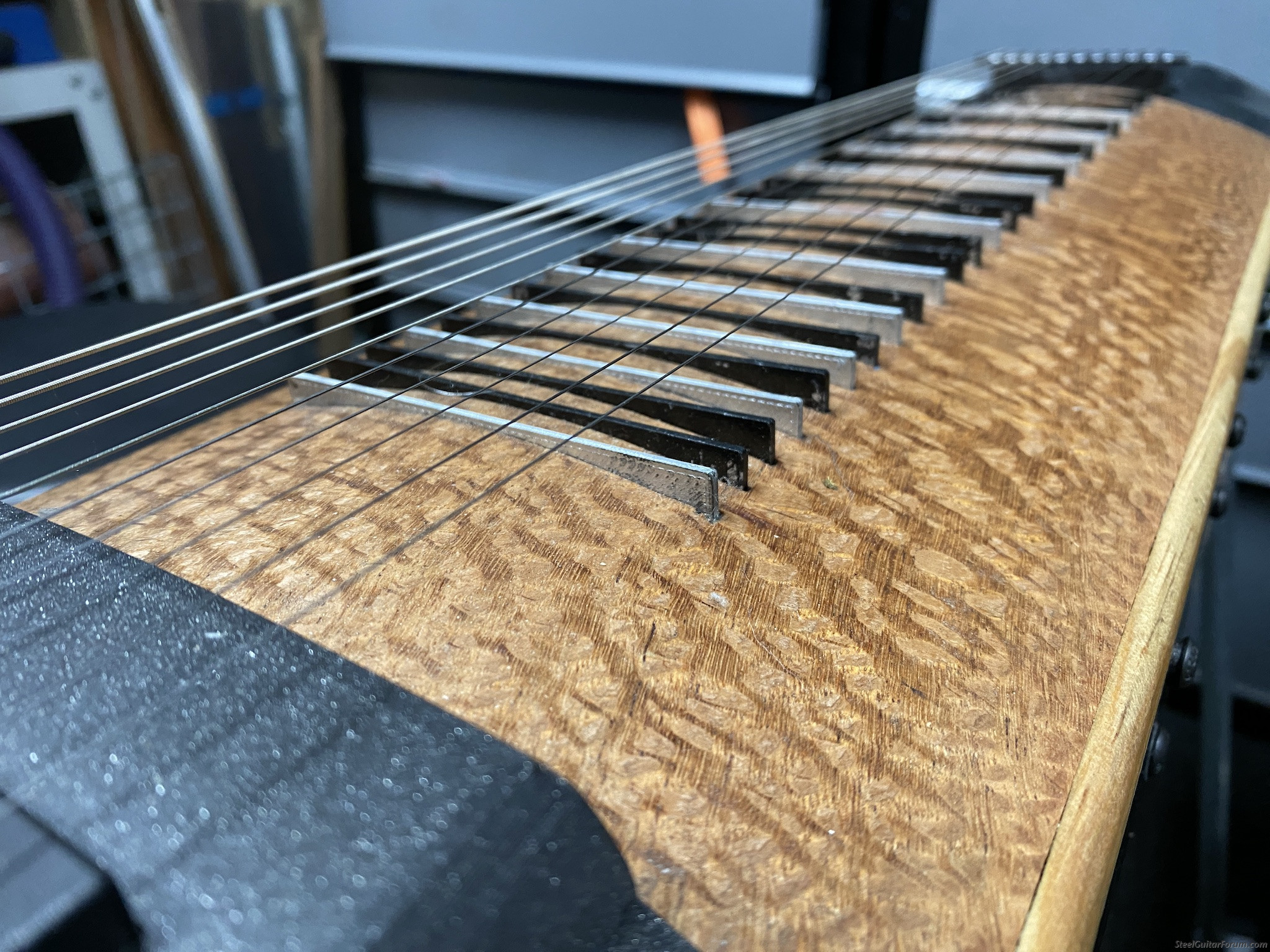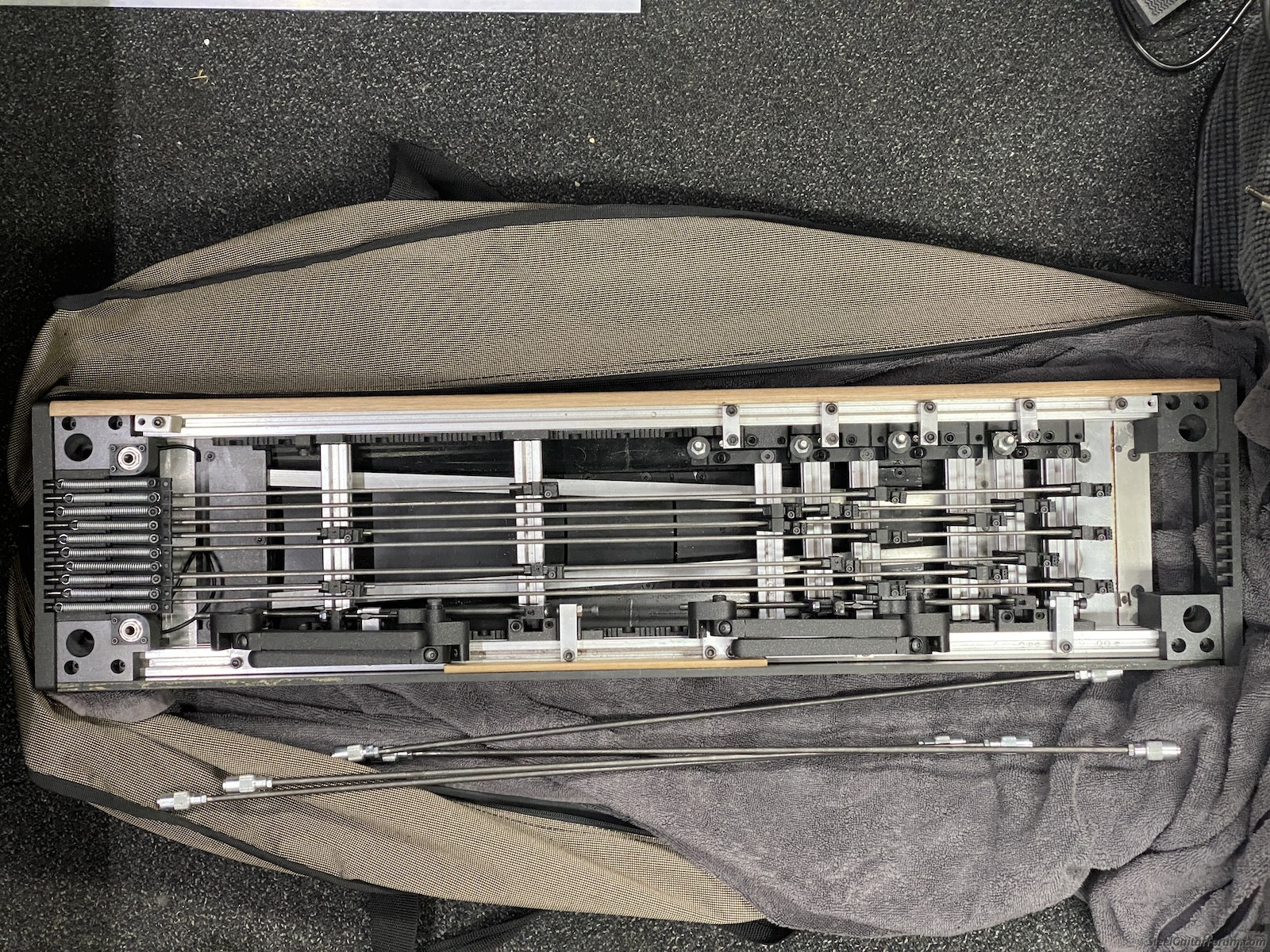GeorgeBoards™ created a palm pedal system that is 3D printed with a small amount of easy to find hardware.
We made the executive decision to Not Sell These. After dscussion we decided to share these files here if it turns out that people want to have them.
I want to open this thread up to discuss the topic of 3D printed lap steel guitar parts before we post any files in the sticky area.
What it takes to get into it - various equipment and materials levels of engineering - blah yadda.
It is a fascinating desktop additive manufacturing process and can be a lot of fun
plus not that expensive to play around with to see if you want to make larger investments for bigger badder gooder.
I will start it off with photos of the bender system. We can talk about what went into each smaller piece and the overall palm bender.
